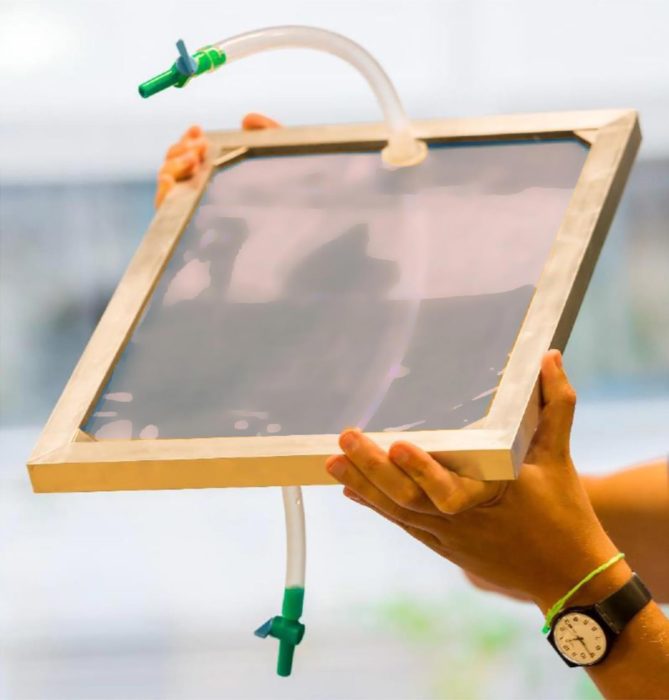Apr 07 2022
Cheap Water Purification
 Have you ever done the thought experiment where you imagine yourself back in time, in a technologically primitive society? What would life really be like, and what could you do to improve it? We are fairly dependent on our modern technology, and that does not give us the knowledge or skill to understand pre-industrial technology. Would you know how to design and build a flush toilet, for example?
Have you ever done the thought experiment where you imagine yourself back in time, in a technologically primitive society? What would life really be like, and what could you do to improve it? We are fairly dependent on our modern technology, and that does not give us the knowledge or skill to understand pre-industrial technology. Would you know how to design and build a flush toilet, for example?
But I have also come to realize that this thought experiment reflects my bias coming from an industrialized nation. You don’t have to go back in time to confront the challenges of lacking electricity, basic sanitation, or clean water. You just have to visit poor and developing parts of the world today. It’s not exactly the same situation, because the technology exists somewhere in the world, but that is not much help to the 1,800 children who die every day from diarrhea from contaminated water. This is another way that our developed-nation bias might manifest – I tend to get interested and excited about advances in technology at the cutting edge, squeezing another 10% out of the energy density of Li-ion batteries, for example. But the technologies that might help the most people are those that can bring basic affordable services to poor countries.
More attention is being paid to this problem. Low-income countries (LICs) lack the resources and institutional infrastructure to invest in the kinds of research most likely to benefit them, while high-income countries (HICs) are much better at leveraging research to improve their economies and standard of living. We tend to think of the X-Prize as progressing the most advanced technology, but even they are turning their attention to basic problems, such as literacy.
This approach is also cost-effective for everyone. Improving the standard of living in the poorest of countries through innovation aimed at their needs helps everyone, and actually reduces population. The two best ways to limit population growth is to reduce childhood mortality and improve women’s rights.
I was reminded of all this by a recent study looking at a device that purifies water without the need for electricity. Lack of clean drinking water is a daily problem for 1.8 billion people, and this problem is projected to get worse. The researchers developed a filter using titanium dioxide nanowires. A mesh of these wires was effective at filtering out bacteria and large viruses. They studied the filter with E. coli (often used as the marker for infectious bacteria contaminating food and water), and found that the filter was highly effective. They also added carbon nanotubes to the filter, interweaving it with the nanowires. When this combined filter is exposed to UV light (via regular sunlight) the TiO2 nanowires produced reactive oxygen species, including hydrogen peroxide (H2O2), hydroxide (OH), and oxygen (O2-). These molecules are highly reactive and good at killing bacteria and viruses (in fact our immune systems use reactive oxygen species to kill invading organisms). The filters have also been tested and show some potential to remove trace amounts of drugs and other contaminants.
The advantages of the filter are obvious. It is small and portable, although it can easily be scaled up. It does not require electricity, as it can operate either by itself or with the addition of sunlight for greater effectiveness. The filter can therefore be used in remote areas without electricity. Its easy to use and does not require any skill or training – just put water into one end and clean water comes out the other.
I could not find any information on cost, and that will likely largely depend on how they are produced and at what scale. But here is another potential advantage to this type of technology. Wealthy nations like the US already send lots of aid to LICs, but there is also often the challenge that sending money may get it into the wrong hands. Do we hand over cash to dictators who might use it to buy weapons instead of food? We could, therefore, send food and medical supplies directly, and that’s often what we do. These kinds of technology projects give us something else we can directly send to LICs without the concern that they will be misused. Sending the ability to have a clean water supply is arguably the best thing we can do in terms of impact.
This filter is not the only such project. In 2015 researchers developed a “drinkable book” filled with pages that can be torn out and used as water filters. They contain copper and silver nanoparticles that help kill bacteria and the filters remove contamination. Unfortunately, I could not find any recent follow up on this product to see if it was actually distributed and to what effect. Ideas like this are great, but they only work if we have appropriate follow through. One advantage of the nanomesh filter is that it has more uses than pages in the book, so it may be a longer term solution.
Hopefully we will see more innovations like this, and they will actually be implemented. This can be a cost-effective investment even for wealthy nations, helping to contribute to stability around the world and mitigate overpopulation.






